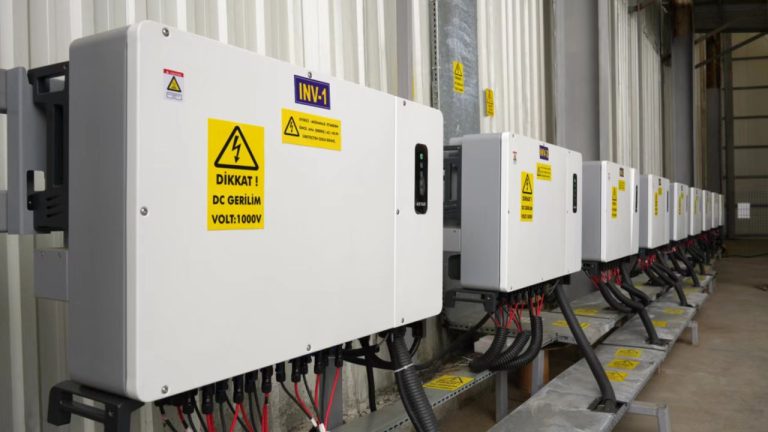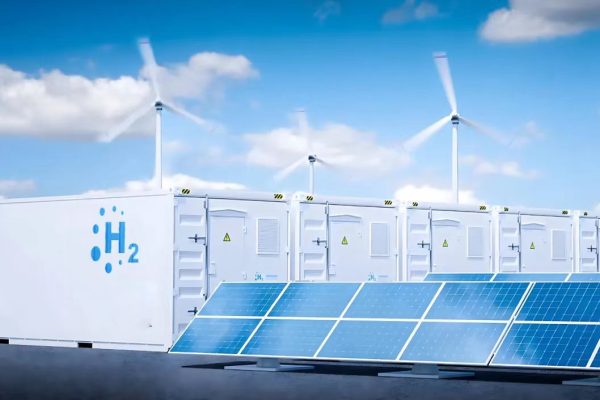A Practical Overview for Installers, Integrators, and Project Buyers
Why Remote Monitoring Is Now a Must-Have
Inverter systems aren’t just power electronics anymore — they’re data nodes in the energy infrastructure. Whether you’re installing a 5kW hybrid inverter in a rural home or managing 20 sites across a small commercial portfolio, remote monitoring is no longer optional:
- 📉 You need to see performance drops before your client complains.
- 🔧 You want to diagnose faults before rolling a technician.
- 📊 You must collect energy data to prove ROI, especially for storage.
Today’s inverters ship with embedded communication options like WiFi, 4G, RS485, or Ethernet — but the software behind the data is what makes or breaks the experience.
In this article, we’ll cover:
- What remote monitoring actually means in small-scale PV + ESS
- Core functions buyers should look for
- A comparative list of popular inverter platforms
- When to go beyond the default OEM software
What Remote Monitoring Actually Involves
✅ At Minimum, You Need:
| Feature | Why It Matters |
|---|---|
| Live Status | See real-time inverter/battery/PV status remotely |
| Error Notifications | Get alerts for faults, overloads, shutdowns |
| Historical Data Access | Analyze past energy usage and generation trends |
| Battery SOC & Flow | For hybrid systems, see charge/discharge and State of Charge |
| Remote Parameter Updates | Update settings like charge limits or time-of-use windows from a dashboard |
If your inverter software doesn’t give you this, you’ll be flying blind — and your customers will notice.
Comparison: Leading Inverter Monitoring Platforms
Let’s compare some commonly used tools for small projects.
| Brand | Portal Name | App? | Key Features | Suitable For |
|---|---|---|---|---|
| Growatt | Shine Server | ✅ | Real-time hybrid data, alerts, multiple sites | Home & SME hybrid |
| GoodWe | SEMS Portal | ✅ | TOU settings, battery data, reports | Residential + C&I |
| SMA | Sunny Portal | ✅ | Modular views, installer diagnostics | Advanced residential |
| Victron | VRM Portal | ✅ | Graph-heavy, full config remote | Off-grid, flexible setups |
| Sungrow | iSolarCloud | ✅ | Strong visualization, frequent updates | Grid-tied & hybrid |
| Huawei | FusionSolar | ✅ | AI alerts, smart energy config | Commercial/industrial |
| Solax | Solax Cloud | ✅ | Clean UI, battery stats | Small residential |
What Installers and Distributors Should Look For
🎯 For Homeowners
- Simple, clean interface
- Daily/monthly savings reports
- Mobile push notifications
- Integration with smart home systems (optional)
🔧 For Installers/Distributors
- Ability to monitor multiple sites under one login
- Remote firmware updates
- Role-based user access (installer vs. end-user)
- Custom error codes for quick diagnosis
- Exportable CSV data for audits or reports
Going Beyond OEM Platforms: Third-Party Monitoring
While built-in software works for many projects, there are situations where 3rd-party monitoring tools provide more control or functionality:
| Use Case | Suggested Tools |
|---|---|
| Mixed-brand system monitoring | Solar-Log, Tigo Energy, Enphase Enlighten* |
| Local-only monitoring (no cloud) | Victron GX Device with LAN |
| Industrial-grade logging & API access | OpenEMS, Solar-Assistant, or custom Modbus tools |
| Custom UI dashboards | Node-RED, Grafana, Home Assistant integrations |
*Enphase primarily supports its own microinverters.
Important: Using third-party platforms often requires protocol conversion (RS485-to-IP) or additional gateway hardware.
Real Example: Off-Grid Resort with Mixed Hybrid Inverters
A small island resort in Southeast Asia used two brands of 8kW hybrid inverters due to procurement constraints. The native apps could not monitor both brands from a single screen.
The distributor added a Modbus TCP-to-RS485 bridge, and used Solar-Assistant (Raspberry Pi-based) to aggregate data across brands. The system now runs:
- Unified dashboard (PV, SOC, Load, Generator)
- SMS alerts for low battery
- Remote SSH access for firmware upgrades
Cost: <$200 in additional hardware
Result: Installer avoided 6 boat trips in the first 90 days.
Buyer Tips: Avoid These Monitoring Mistakes
| Mistake | What to Do Instead |
|---|---|
| Choosing an inverter with no app | Always verify software availability before ordering |
| Ignoring data export limitations | Ensure the portal allows CSV or API access |
| Not planning for multiple-site access | Use platforms that support fleet monitoring |
| Forgetting data retention policies | Ask how long historical data is stored in the cloud |
| Assuming all firmware is OTA capable | Confirm whether remote upgrades are supported |
Your Value as a Technical Trade Partner
When you help clients compare monitoring options, you’re not just selling hardware — you’re improving long-term project success. Your advice can help:
- Avoid silent failures
- Optimize storage ROI
- Reduce unnecessary site visits
- Build trust through visibility
Whether you’re working with a local installer or a regional distributor, your system-level knowledge of inverter software is a real differentiator.









